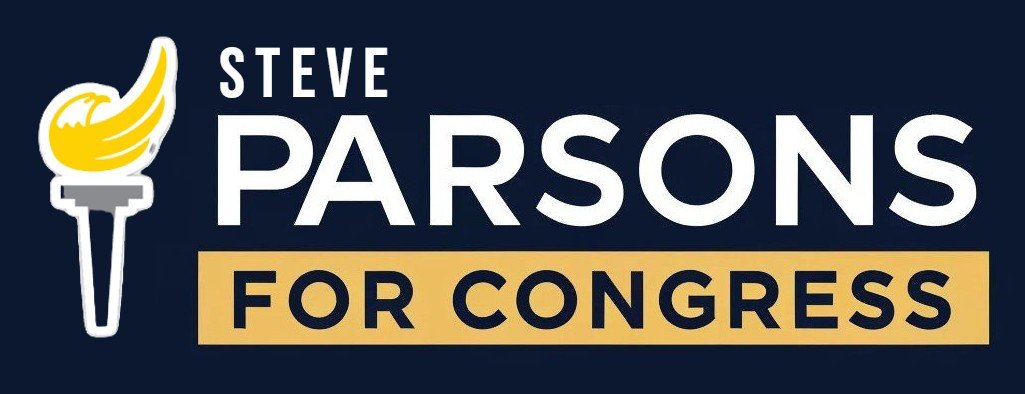Immigration Policy as a Practical Libertarian
by Steve G. Parsons, Ph.D.
Currently - the Worst of Situations. Currently, there are several factors that contribute to southern US border crossings being the worst of all possible immigration situations. First, large numbers of people are crossing outside of official border crossings. Second, outdated and bureaucratic work visa and green card regulations prevent immigrants from obtaining jobs. Third, undocumented immigrants still receive philanthropic and government safety net subsidies. Fourth, the so-called 3/10 rules virtually assure that illegal immigrants who have been here for over a year will continue to be illegal; it incentivizes remaining illegal. Fifth, understaffing has created huge backlogs in processing green cards, work visas and asylum cases.
Create a Path for Legal Immigration and taxpayers. Sound immigration reform has several components. First, the U.S. should eliminate the existing 3/10 rule for existing undocumented immigrants. This rule requires that undocumented immigrants who have been in the US for 6 months or 1 years, must return to their country of origin for 3 years or 10 years before making an attempt at legal entry (and then there are long delays in legal entry). This creates a dis-incentive to become a legal immigrant, especially for those who have built a life in the US. According to the Institute on Taxation and Economic Policy, undocumented immigrants paid about $11.74 billion in state and local taxes in 2017. (Undocumented Immigrants’ State & Local Tax Contributions – ITEP). The Social Security Administration found that for 2010, "the excess of tax revenue paid to the [SSA] Trust Funds over benefits paid from these funds based on earnings of unauthorized workers is about $12 billion." PolitiFact | Clinton says undocumented immigrants pay $12 billion a year into Social Security Such payments are certainly higher today and would increase further with a defined and easier path to permanent residency.
Cut Tariffs. Second, the U.S. should eliminate (or at least reduce) tariffs or import restrictions on Latin American countries. This reduces inflation in the US by eliminating the taxes US businesses pay on Latin American products. This also allows some jobs to remain in Latin America thereby reducing immigrants traveling to the US. to find jobs here. This is particularly true for tariffs on Mexican products because we will need to rely on Mexico for assistance with a revised immigration policy. For example, there is a problem if an undocumented alien from El Salvador (for example) is detained on the US side of the border and the US attempts to send that undocumented alien (who is not from Mexico) back across the Mexican border.
Cut Green Card and Work Visa Bureaucracy. Third, the green card and work visa programs need major revisions. The existing programs are bureaucratic with artificial and inefficient requirements. For example, in 2020 the fiscally conservative CATO institute found “Congress should greatly expand visas for lesser‐skilled workers. No single policy has done more to reduce illegal immigration than expanding these types of work visas.”(Reforming the Immigration System: A Brief Outline | Cato Institute.) Bloomberg Law states: “Business immigration visa quotas have long presented a major hurdle for employers and employees. There is no logic to the quota systems that Congress has in place, and quotas are not accurately connected with economic reality.” (Congress Needs to Fix Immigration Visa Quotas to Boost Economy (bloomberglaw.com)). The bureaucratic rules include arbitrary caps per country, the need to return to the country of origin after certain periods, and an obtuse set of other restrictions. This makes it difficult for US employers to find, utilize and retain good workers.
Government Welfare for Citizens only. Fourth, the fiscally conservative CATO Institute found in 2020: “Congress should reserve access to all means‐tested welfare and entitlements to only U.S. citizens except in truly extraordinary circumstances.” For humanitarian purposes this may mean that the US could contribute to Mexico housing potential migrants in Mexico. This can be done far more cheaply than housing migrants in New York City, for example. Such housing should still be superior to that immigrants faced in traveling to the border. This would be a temporary partial solution until immigration applications can be processed.
Staffing. Fifth, staffing for immigration processing must be increased. For example, the number of judges dealing with asylum cases is far too small. It may be possible to have short training for new judges and use volunteers to reduce the backlog. The five recommendations above will eventually take the pressure off of border patrol and immigration caseloads. In particular, as more work visas and green cards are granted the number of asylum cases will fall. However, there may need to be more staffing for border patrol as a transition step.
Conclusion. It is critical to recognize that immigration is the heart of America; over 98% of our population are immigrants or the descendants of immigrants. Job postings are still near record highs and the unemployment rate has been less than 4% since 2021. In 1870 (when my grandfather was born) the combined birth rate and immigration rate was 5.2% per year; today the birth rate is 1.2%. In order to reach a combined birth-immigration rate of 1870 would require 13.2 million immigrants per year. To reach half that level (2.6%) would require 4.6 million immigrants per year. American needs critical changes to its immigration policy.
For a more detailed discussion of this topic see: Reforming the Immigration System: A Brief Outline | Cato Institute.
